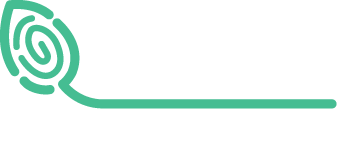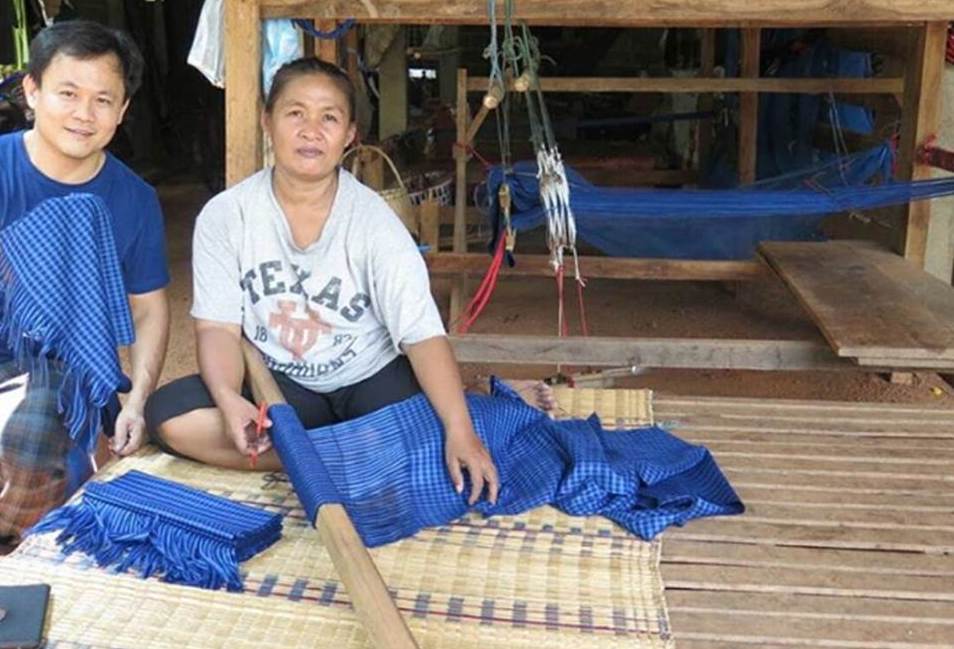
Choochai’s TENCEL™ Indigo Scarves are Starting to Turn Heads
If ever there was a scarf for a true blueblood to fawn over, it would be the indigo creations coming from Choochai.
The Thailand-based mastermind has created crave-worthy indigo patterns, tapping into TENCEL™ Lyocell to give the scarves a hand feel that makes them perfect for wearing around the neck.
To find out what has inspired his creations, Carved in Blue caught up with the man behind the brand, Choochai himself.
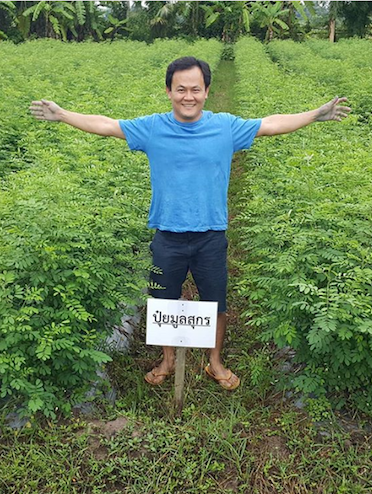
Carved in Blue: Tell us a little about your company—what does Choochai mean?
Choochai: Choochai, he is the mastermind for combining TENCEL™ fibers and natural indigo and hand-weaving into beautiful textile-like scarves. His major of study in college was textile chemistry, he has been working in textile industry since he graduated from college until now.
Having been travelling around his beloved country of Thailand from young age, having seen hand -weaving work in rural areas, admiring the factors existing in the local weaving people,
the culture, the tradition, the artistic quality, skillfulness and perseverance in doing the beautiful weaving work, he fell in love with it.
Carved in Blue: What was it about TENCEL™ that made you want to use it for your scarves? 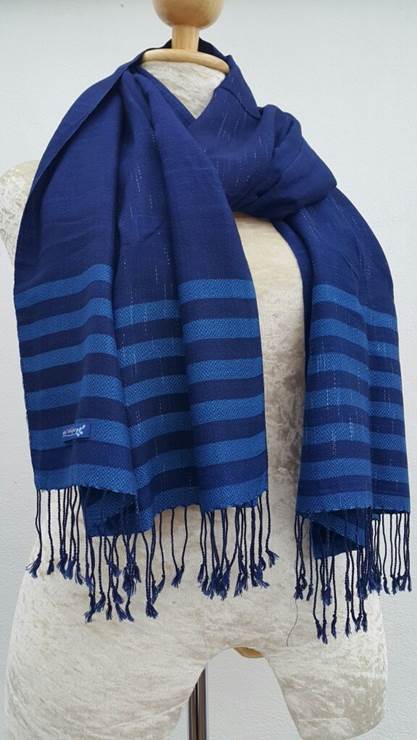
Choochai: I know the products of Lenzing quite a long time, as I have been routinely working for ladies underwear manufacturer brand Wacoal. TENCEL™ lyocell is worldwide well known for its ecologically manufacturing process and its superb quality. It is an excellent fiber to wrap our skin. TENCEL™ lycoell and natural indigo are well deserved to get along together. They encourage and support each other for being in a piece of art like hand weaving textile works. I can give a definition of these combination as “The wood in wood.”
Carved in Blue: What is Choochai bringing to the market that no one else is?
Choochai: Choochai and his team are at the beginning of the idea to make and sell their scarves to the market outside Thailand. At the moment, we are just focusing on making our product from TENCEL™ lyocell + natural indigo + hand weaving. We can say that every single step we have them done by our people, except the fiber from Lenzing. From the farming of Indigofera Tinctoria, to the indigo pigment extraction and the indigo dyebath preparation, to the hand-dyeing work, and finally the hand-loomed weaving. Most important of all is that our work lets us stay at home with our families, in our farms with the fresh air and the nature and we are happy that our scarves make people wearing them happy. All the processes are non-toxic, chemical-free.
Carved in Blue: How do you incorporate sustainability into the product and process?
Choochai: We follow every footsteps of our older generation. We love our land, we do agriculture for living, we wish to hand over to our children of next generations an environment as green as possible, as our former generations did for us. Our process is done with traditional organic ways and transparency.
Carved in Blue: What does sustainability mean to you?
Choochai: It is simple, our work is not anything new. As our older generation did on the same land, we are doing the same things they did and the future generations definitely can do it.
Business is not our supreme goal, there must always be a green and clean environment.
Carved in Blue: When did you first know of your love for denim?
Choochai: From the first year at vocational college where I studied textile, I learned fabric weaving structure, with the handloom, I wove plain, twill and other weave, analyzing the weaving structures from the actual pieces of different fabric. Denim was the most interesting, from its appearances, it was the fading of color. As being college students for boys, everybody wore jeans and white long sleeve shirts going to study as if this outfit were uniforms. To buy a brand-new pair of jeans was difficult for many friends, including me. So we went to Chatuchak weekend market to look for the used ones. It was a fun activity for many college boys. This was when I knew I love jeans.
Carved in Blue: Where do you find denim inspiration?
Choochai: All of them, from internet, Instagrammers, denim manufacturers, denimheads from all over the world, including Thailand. For people, I think I like Ruedi Karrer @swissjeansfreak, I think his passion and love in denim and jeans makes him an idol to many people. I feel his friendliness from his smile. Another guy is Thomas Stege Bojer @denimhunters. He works on writing many articles, interviewing, related to denim and jeans are useful enormously for our community. About the cities, I would say my dream, I need to visit many denim manufacturers in USA, Japan’s Okayama. Would love to attend the Denim Days in Amsterdam and NYC some day in the future.
Carved in Blue: What’s next for Choochai?
Choochai: We make fabric on hand-looms. We are not really thinking too much of bigger business in terms of quantity, but we consider quality and the happiness from what we are capable of doing. There is the idea of making handwoven denim from natural indigo-dyed TENCEL™ lyocell, it probably would be suitable for making light duty, likely shirts or other tops.
From our existing fabric we will be expanding our product line into garments and items that complement jeans, including vests. Furthermore, we hope to continue blending
traditional Thai textile manufacturing techniques with modern designs, innovations and raw materials. As such, we want to increase our brand recognition so or customers
always know that our products are unique, superior, trendy and a step ahead of the others. We want to be known for high quality indigo apparel all the while sourcing sustainably and supporting local villages in rural Thailand.
Carved in Blue: What does Carved in Blue mean to you?
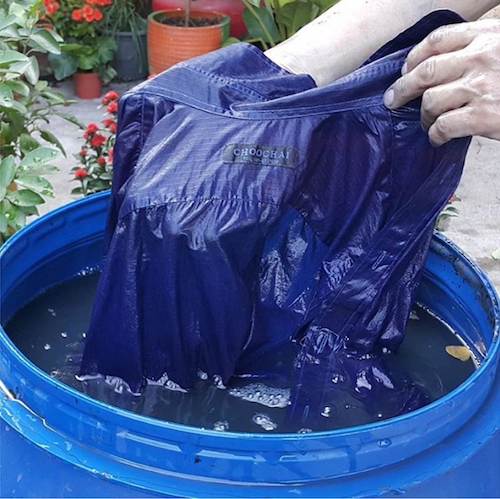
Choochai: It could be like a library full of books of TENCEL™ lyocell stories for everybody to learn of the using of this fiber, a big stage for all denim people to showcase their products and opportunity. It could be like a laboratory make testing of new innovation, could be like both experimental farm to make higher yield from the crops. It could be a big playground for people to come out to play together, exchanging idea and so on.
